Though it remains skeptical of battery-electric technology, Toyota’s new bZ4X Concept offers a strong hint of what’s to come when it launches the first of what will be seven all-electric “Beyond Zero” models starting next year.
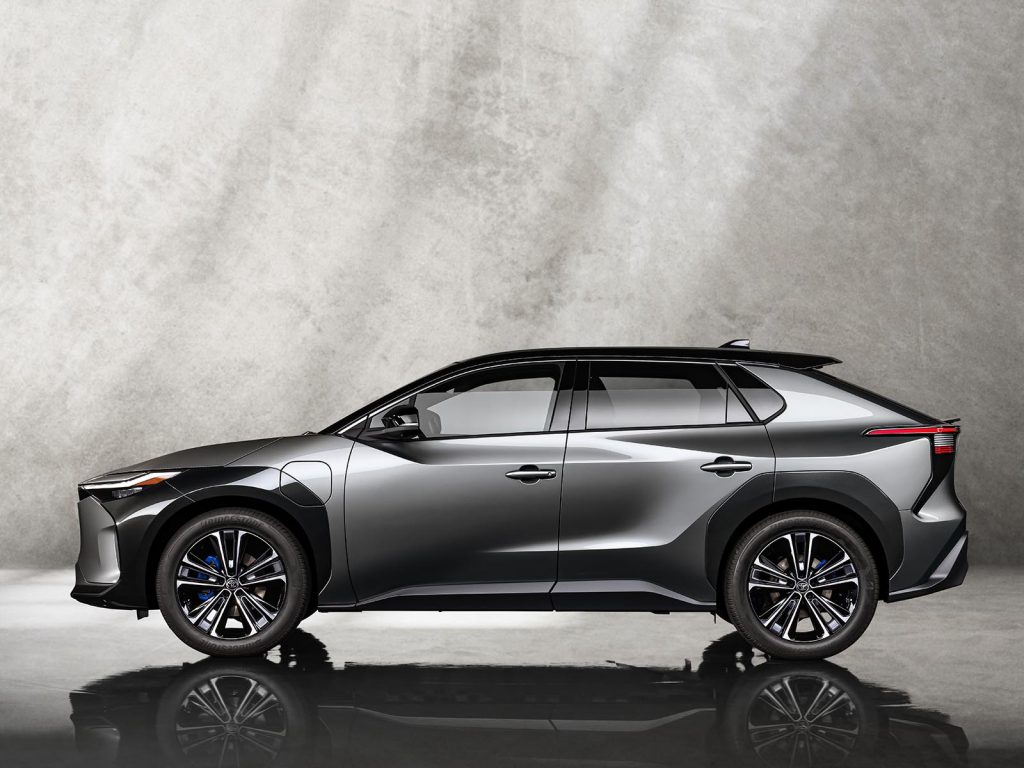
First shown at the Shanghai Motor Show in April, the bZ4X is making its U.S. debut during a four-day media gathering at Toyota headquarters outside Dallas this week. It was developed as part of a joint program with Subaru, the smaller Japanese automaker planning to launch a production version of its Solterra prototype in late 2022.
Bob Carter, Toyota’s North American sales chief, told TheDetroitBureau the production version of the bZ4X will come “later this year” with plans for it to hit showrooms in 2022.
The bZ4X, notes Lisa Materazzo, group vice president of Toyota Marketing, is “Roughly the size of a RAV4, with the versatility to stand apart from other BEVs, it will be well positioned in the sweet spot of the market.”
Early pioneer falls behind
Toyota was an early pioneer of vehicle electrification, launching the original Prius hybrid more than two decades ago. Today, it sells more gas-electric vehicles than any other competitor, but the company remains skeptical of pure battery-electric technology.
Last December, President and CEO Akio Toyoda even tried to scuttle Japanese government plans to shift to all-electric vehicles, much as other countries like Norway and Great Britain aim to do during the next 10 to 15 years.
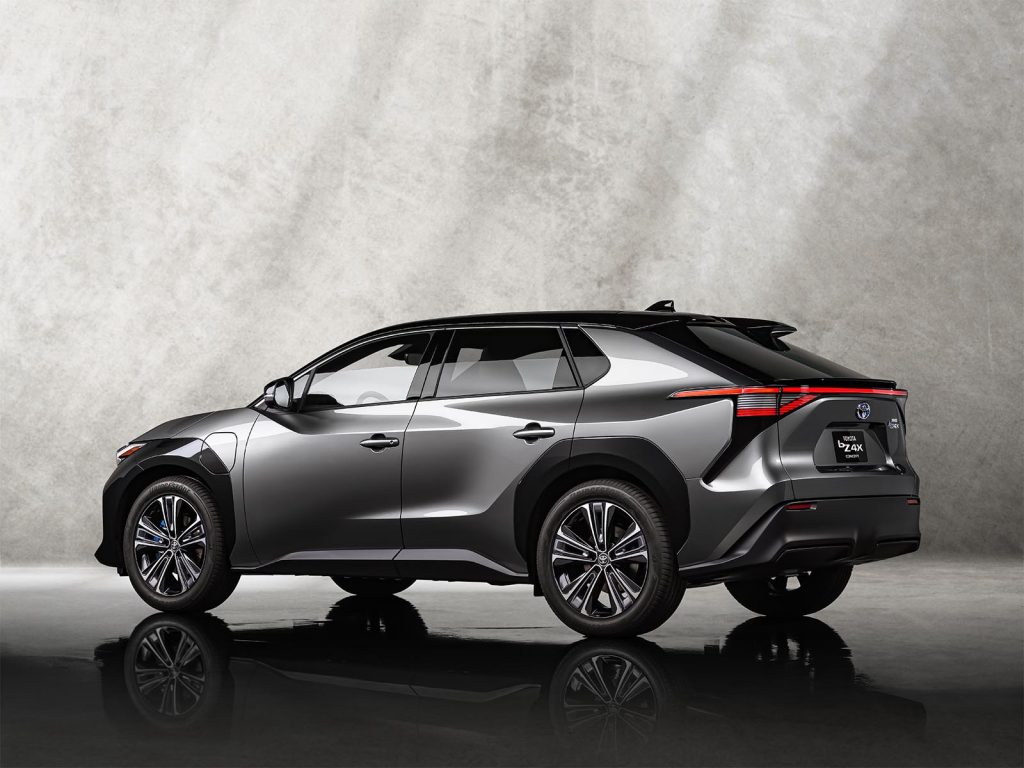
For its part, Toyota aims to offer hybrid versions of virtually every vehicle in its line-up by mid-decade, with a number of plug-in hybrids thrown into the mix. But the debut of the bZ4X — and the production model to follow — shows it can no longer resist the inevitable, according to Stephanie Brinley, principal auto analyst at IHS Markit.
“It’s a tsunami, a wave crushing anyone who doesn’t believe in the technology,” said Brinley. “The pressure to make (BEVs) the only solution is massive.”
Details TBA
For the moment, Toyota isn’t saying much about the bZ4X. But it shares the basic, skateboard-like architecture found in the Subaru Solterra, with battery pack and motors mounted below the load floor. It is widely expected that both vehicles will offer sporty performance and a range of at least 250 — and perhaps 300 — miles.
Toyota’s crossover lifts a page from the Subaru handbook, with an almost completely grille-less nose. Narrow, almost slit-like headlamps are framed by lacquer-black cladding that flows over the front wheels. The doors feature a high beltline and distinctive creases, while the relatively flat roof tapers into a high, wind-cheating spoiler.
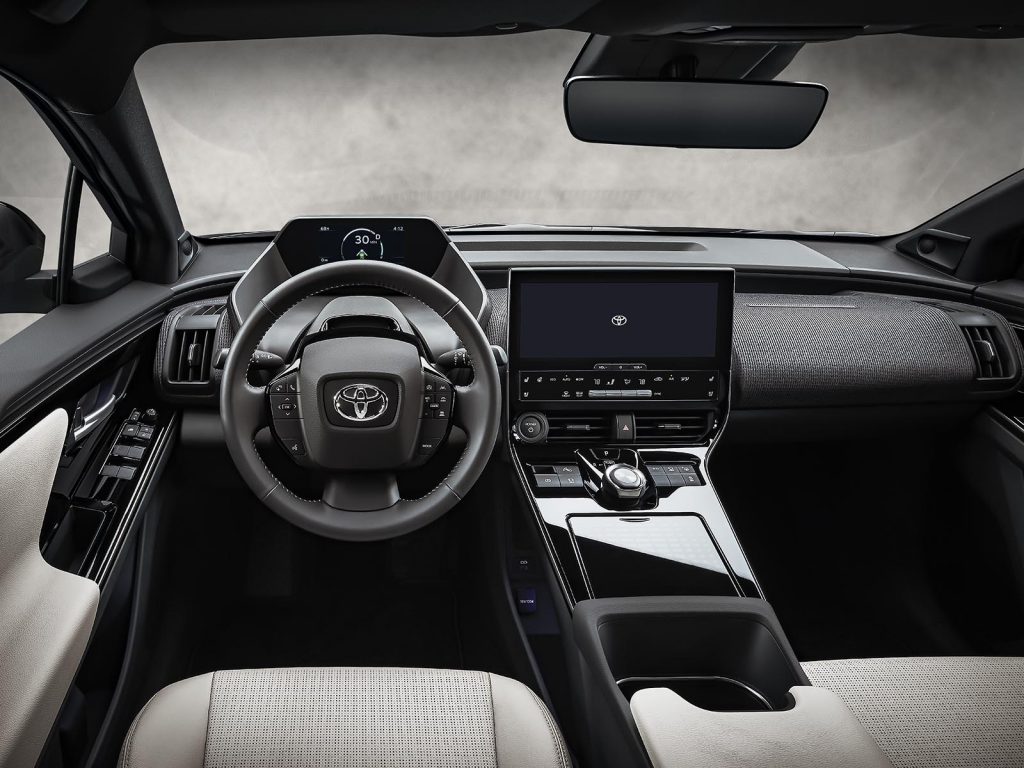
The cabin adopts a minimalist design, with only a handful of conventional controls. Most of the heavy lifting is done using a large touchscreen atop the center console. In what appears to be a first for Toyota, the system also appears to have an iDrive-like control knob. The production version will access an all-new infotainment system Toyota is preparing to release, one featuring an Amazon Alexa-like voice assistant. A second digital display floats behind the steering wheel, replacing conventional gauges.
Beyond Zero
While Toyota isn’t offering up a precise timetable, the production version of the bZ4X Concept is expected to be the first of seven Beyond Zero battery-electric vehicles. The automaker plans to add another eight BEVs — though not all will come to the U.S.
But while some competitors, such as General Motors, plan to switch entirely to battery-electric models, Toyota plans to retain a mix of options including conventional hybrids, PHEVs and even hydrogen fuel-cell vehicles. In all, it expects to have 70 different “electrified” vehicles in its line-up by 2025.
Meanwhile, “by 2030, 15% of our sales will be battery-electric or fuel-cell electrics,” Jack Hollis, senior vice president of North American automotive operations, said Monday evening. That’s significantly behind what other manufacturers are targeting.
Ford last month announced a roughly 50% increase in its spending on battery-cars, CEO Jim Farley predicting BEVs alone will generate 40% of its global volume by 2030. GM expects to eliminate gas and diesel powertrains entirely by 2035. While Toyota may not be moving fast enough, the bZ4X is a good start considering the U.S. market’s fixation on SUVs, said Sam Abuelsamid, principal auto analyst with Guidehouse Insights. “It’s the right segment to dive into first.”



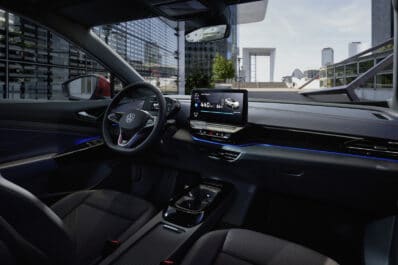

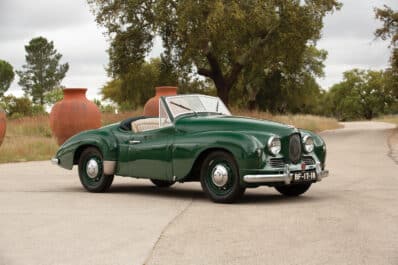
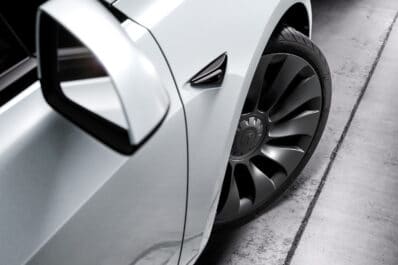

PHEVs make a lot of sense. My worry is that EV owners will park at charging stations then not bother to move when their car is charged. Other EV owners will not get access go chargers.